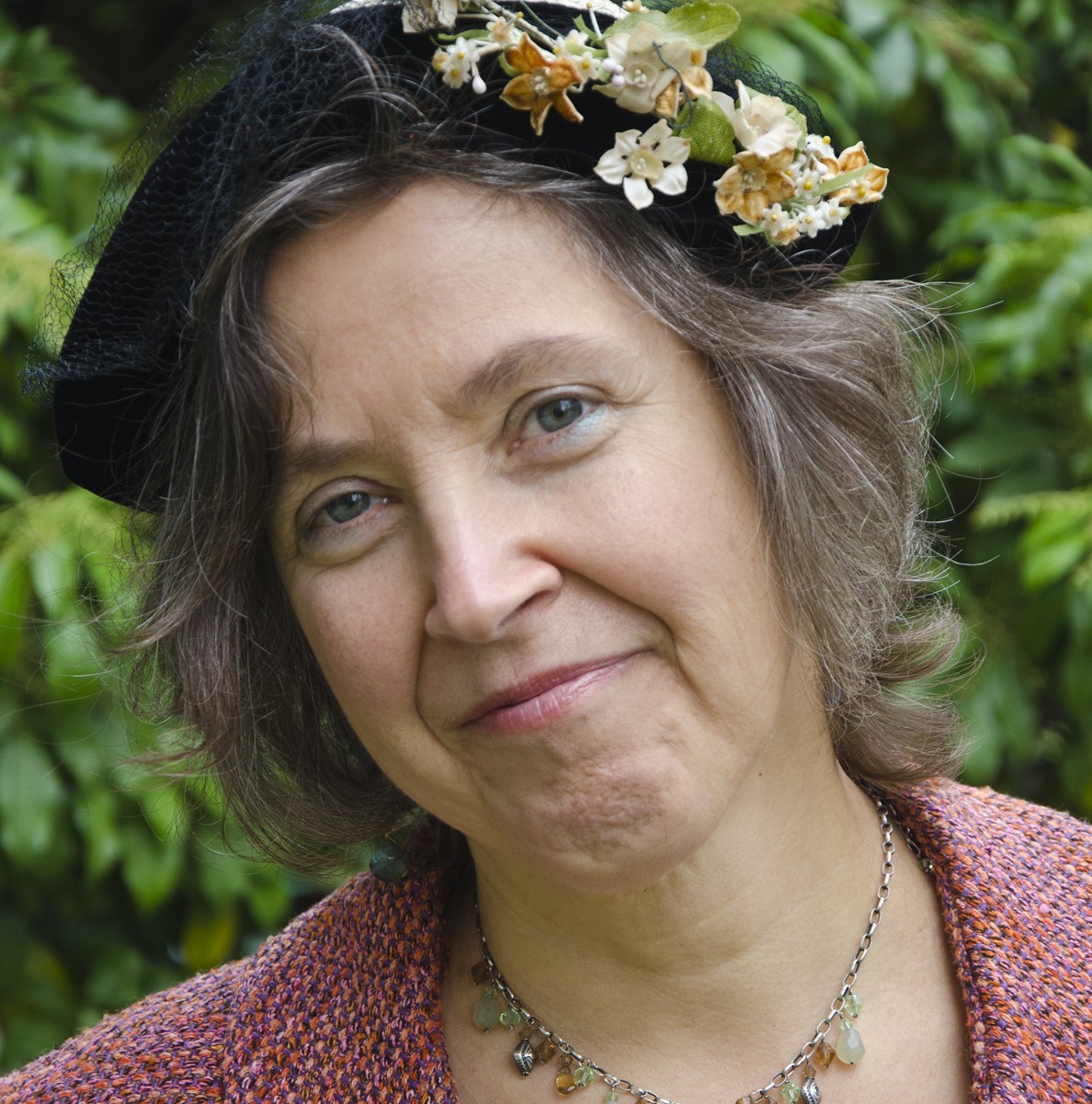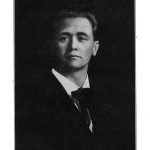Emanuel Felke, a Century Later
Sussanna Czeranko, ND, BBE
A century ago this year, Emanuel Felke moved to Sobernheim, a quaint, beautiful town on the Nahe River in Germany. Here he established a remarkable healing oasis based upon his carefully formulated collection of therapeutic agents and systems. In short order, Sobernheim became a successful spa town, anchored in Felke’s work. He became renowned as the “clay pastor,” administering free health care not only to members of his flock but also to any others in need. Surprisingly, the name “Felke” is not as well known outside of Germany as, say, Kneipp, Priessnitz, or Just, yet this great healer man accomplished much from which we continue to benefit to this very day, most particularly in the naturopathic profession. Felke is credited, for example, with being the first to use complex homeopathic remedies that he developed by incorporating other modalities such as iridology, to fine-tune his homeopathic combinations. Indeed, in addition to his pioneering work combining different active substances in the treatment of chronic diseases, he also refined the use of iridology, discovered earlier by the Hungarian physician, Ignatz Peczely. This year, 2015, the town of Bad Sobernheim, where Felke’s eponymous work has been immortalized with statues, a school [named after him], a museum, and several exquisite spa clinics, will hold a centennial celebration in honor of its most famous ancestor.
Felke’s Introduction to Natural Medicine
Emanuel Felke was born in 1856 in the village of Kladen, in the Saxony-Anhalt region of Germany. He was the son of a teacher and a minister’s daughter. Not surprisingly for this era, he studied theology, but along the way also took a strong interest in medicine. His path to theology may have been guided by his mother, but his interests continued to extend beyond his spiritual ministrations and the church. While studying theology, he had a curiosity about plants and the homeopathy of Hahnemann, and the hydrotherapy of Priessnitz fascinated him. Felke experienced the healing benefits of homeopathy first-hand as a young child, an experience which influenced the direction of his life as a pastor. (Bolland, 1999, p.30) He lived at a time of many great innovations in natural healing methods, and had the fortuitous luck of being able to connect with these works and even study with some of these visionaries. In addition to studying Samuel Hahnemann’s work, he encountered the work of Adolf Just, Ignatz Peczely, Louis Kuhne, and others. Felke assimilated many therapies from the giants of Natural Healing, and combined them in such a way that he was able to put his stamp on a unique system of therapy. Felke took the best therapies and formulated his special brand of healing.
Homeopathy, iridology and earth-cure would become reinvented by Felke as he launched into his spiritual life, not just as a Lutheran minister but also as a prominent and needed doctor in every community in which he resided. Another person who left a huge impression upon Felke was Louis Kuhne. From Kuhne, Felke learned the importance of the friction sitz bath, which he modified. It is interesting for us to trace the story of our historical naturopathic ancestors by studying their choice of therapeutic tools.
Felke had much in common with Hahnemann and Just. These men left behind a legacy which has influenced naturopathic medicine ever since. Like Hahnemann and Just, Felke was led to a vocation of the highest calling – that of healing. Felke was fascinated by Hahnemann’s reputation as an articulate and versatile linguist, a skill which enhanced his discovery of homeopathy. Both Felke and Hahnemann were avid observers of the human condition and undertook their studies of medicine very seriously. Both, discontented with the limitations of conventional medicine, had the courage to think outside of the rigid medical paradigms that surrounded them. Felke arrived at an understanding of health from intensive studies that examined the cause of diseases as much as their symptoms. Felke “always strove to eliminate the cause of disease and never tried to suppress the symptoms.” (Lust, 1928, p.44) Homeopathy and earth-cure were natural choices adopted by Felke, and became important components of his healing work.
Contributions to Homeopathy & Iridology
Felke was assigned his first pastorate in Cronenberg, and in 1890, with the use of homeopathy using single remedies, successfully treated a diphtheria epidemic. While the children under the care of the regular medical doctor succumbed to diphtheria, Felke’s young patients survived. The prominent remedy used by Felke was Mercurius cyanatus 30C. (Bolland, 1999, p.28) In his early years of practicing homeopathy, Felke used primarily single substances, according to Hahnemann’s teachings. (Bolland, 1999, p.30) Felke’s use of homeopathic remedies was practical and insightful. “He tended to give higher potencies to children and women and lower potencies to men and less sensitive patients.” (Blessings, 2011, p.18) In the last decade of his life, Felke used almost exclusively complex homeopathic remedies that he had personally formulated based upon his scrupulous observations.
Felke was a master of many therapeutic disciplines that included iridology, homeopathy, and medicinal herbs. It was his mastery of homeopathy and iridology, though, that established his phenomenal success. Felke was the first to recognize the importance of iridology to aid in the selection of the correct homeopathic constitutional remedy. He curated many useful complexes that he prescribed, and utilized iridology and constitutional diagnosis rigorously. He was thorough in his methodology; however, he also was gifted with insight and intuition. Felke became disappointed with the effectiveness of single-substance homeopathy for chronic conditions, and worked tirelessly to develop an ingenious complex-substance homeopathic system, which he coined the Felke-Complex. (Bolland, 1999, p.30) He recognized that he could help his patients faster if he combined homeopathic remedies, especially when treating chronic diseases. We are certainly indebted to Felke for the continuing relevance of his work on complex homeopathic remedies.
Even though he began in earnest as a theologian and pastor, Felke, as Boyle points out, “wanted to be nothing but a priest, but his reputation as a diagnostician and therapist followed him, and soon the sick besieged the parsonage.” (Boyle et al, 1994, p.132) Wherever Felke went, he was sought for medical advice. He eventually moved to Repelen, where his work with homeopathy received support from members of the community who formed an association to help defer the costs for the remedies that Felke dispensed for free. The literature reveals that he and Father Sebastian Kneipp were genuine healers and eschewed financial gain.
Adolf Just’s Influence
In 1896, Adolf Just wrote Return to Nature, which launched the beginning of a back-to-land movement. His book took the world by storm, and many people interested in holistic and natural health paid attention. Just had created a holistic health retreat called the Jungborn, advocating living simply and naturally, as Mother Nature intended. At the Jungborn, people disrobed and enjoyed the serenity and health properties that can only be found in Nature. Water, earth, sun, fresh air, simple diet, and exercise were the signature markers for this new era of health. Both Felke and Just had much in common. Both shared their love of God and Nature and helping others.
Felke had been working with homeopathy for a long time, but after reading Just’s book, he developed an interest in Just’s therapies, in particular the Clay Cure. (Bolland, 1999, p.31) With some members of his congregation, Felke visited Adolf Just at his Jungborn in 1897/1898 to learn about his therapeutic methods and installations. Adolf Just was a deeply religious and spiritual man who wrote, “We need only to lead the sick to a purely natural mode of treatment and of life, which should be the same in all cases of sickness.” Just continues, “Place your faith not on the skill and knowledge of men; look aloft, rather, to the Almighty and all-good God; obey again the laws of Nature, which are God’s laws, and if you have the right kind of trust in God, He will always help you, and all your troubles and ills will soon disappear.” (Just, 1903, p.243-244)
Felke was so enchanted by Just’s work that he returned to his parish in Repelen and created his own retreat center modeled after Just’s Jungborn. His vision was to replicate what he had seen at Just’s Jungborn. The influence of Just on Felke’s work is reflected in many aspects of Felke’s methods. Felke and his followers quickly obtained a large property on Repelen Lake, not far from the village church, to establish a spa facility that had 50 open-air cabins to accommodate 100 to 120 people. Felke built up a flourishing spa business, first in Repelen and then in Bad Sobernheim. Many of the spa guests came from far away, including the United States, England, and Russia. This provided an enormous economic boost for the town and, in particular, for the hotel industry. Felke would eventually take his successes in Repelen to Bad Sobernheim. His reputation and success eventually led to the creation of Felke spas in Berlin, Aachen, Krefeld, Kettwig, Dortmund, and Stettin.
In his seventh edition of Return to Nature in 1910, Just wrote: “Pastor Felke not only assimilated my suggestions and the ideas of the Jungborn, but he also integrated my method with Iris diagnosis and homeopathy.” (Bolland, 1999, p.31) The Jungborn at Repelen came to an end, though, with the outbreak of World War I, when spa guests were evacuated and the facility was converted to a military hospital. At that point, Felke moved to Sobernheim, where his legacy lives on. Spa guests and general tourists alike seek out the statues of Felke in central park, as well as in the spa that had once thrived under his direction in this picturesque town.
Felke’s Therapeutic Strategies
Felke amalgamated the 4 elements championed by his mentors into a synthesis of therapeutic protocols, collectively, Just’s clay-, air-, sun-, and natural baths, and Kuhne’s sitz baths and vegetarian diet, along with his already established skills of homeopathy and iridology. The treatments found at the Felke Jungborn Park included all of Nature’s elements and more. Felke relied first upon the elements of Nature to do their work before he applied his homeopathic remedies. The therapeutic values of water, air, light and earth were the first steps of Felke’s strategy in patient care. The first element of water used was the modified Kuhne “friction hip bath,” with elements of Adolf Just’s “natural bath.” The second element was air, with breathing and exercise. Without clothes, after the sitz bath, people would move and breathe fresh air. Then came the third element, light, and the element of fire in the form of light on the uncovered skin. The fourth element was earth, which was administered as clay baths and sleeping on the ground. One to 2 times a day, the patient would be exposed to the earth’s magnetic currency in the guise of a clay bath.
Felke, though, did not stop with the 4 elements alone. Always curious and adoptive of new approaches which would encourage health, he incorporated the meatless diet into his protocols. For example, he countered the customary practice of eating soup at the beginning of the meal with a raw vegetable dish instead. This was considered a cardinal sin because beginning the noon and evening meals with soup was the custom. Felke was criticized for such dietary counsel, but was proved right when blood tests of diet with raw vegetables supported without question that raw diet was better: more WBCs and less fatigue.
Central to his therapeutic approach, however, was homeopathy. Felke often declared, “Homeopathy is the backbone of my medicine.” (Bolland, 1999, p.30) The benefits achieved by using different potencies of remedies targeted to different organ systems were the key to his great success. Although complex homeopathy was a system that Felke used and perfected, he never departed from Hahnemann’s laws of similars. He and his students developed numerous complex homeopathic remedies which were distributed by a variety of independent pharmacies. Today, Felke’s complex homeopathic remedies are still manufactured, and some of these pharmacies are still in existence, such as Hevert in Bad Sobernheim. These products are in great demand by doctors around the world. (Bolland, 1999, p.30)
Closing Comments
Last summer, I had the opportunity to experience first-hand the Felke clay and bath treatments in Bad Sobernheim. I had arrived quite depleted after having spent months burning both ends of the candle, having just finished a book project, organizing and rolling out an international conference, and completing numerous speaking engagements. After 2 days of clay baths, and the famous “Louis Kuhne and [Adolf] Just Natural Bath” that Felke incorporated into his treatment plan, as well as other Felke specialties, such as the morning herbal tea ritual, homeopathy, and all of this cocooned in the glorious serenity of Felke’s sanctuary, I left completely rejuvenated in body and soul. The pace and balance of those days made me more than eager to return, and to carve out a full week – or even 2 – of such a rhythm. My body savored the earth, the water, the air, the wonderful food, and the camaraderie and friendship of fellow spa visitors.
Lust writes of Felke, “He was a genuine healer, wondrously gifted by Nature, worthy of being mentioned together with Kneipp, Priessnitz, Schroth and other apostles of natural healing methods.” (Lust, 1928, p.44) An unsung hero in our naturopathic kaleidoscope, Felke’s history and relevance to our medicine are important ingredients in our history, our formation, and our timelessness.
 Sussanna Czeranko ND, BBE, incorporates “nature-cure” approaches to primary care by including balneotherapy, breathing therapy, and nutrition into her naturopathic practice. Dr Czeranko is a faculty member working as the Rare Books curator at NCNM and is currently compiling a 12-volume series based upon the journals published early in the last century by Benedict Lust. Four of the books have been published: Origins of Naturopathic Medicine, Philosophy of Naturopathic Medicine, Dietetics of Naturopathic Medicine, and Principles of Naturopathic Medicine. In addition to her work in balneotherapy, she is the founder of the Breathing Academy, a training institute for naturopaths to incorporate a scientific model of breathing therapy called Buteyko into their practice. She is a founding board member of the International Congress of Naturopathic Medicine and a member of the International Society of Medical Hydrology.
Sussanna Czeranko ND, BBE, incorporates “nature-cure” approaches to primary care by including balneotherapy, breathing therapy, and nutrition into her naturopathic practice. Dr Czeranko is a faculty member working as the Rare Books curator at NCNM and is currently compiling a 12-volume series based upon the journals published early in the last century by Benedict Lust. Four of the books have been published: Origins of Naturopathic Medicine, Philosophy of Naturopathic Medicine, Dietetics of Naturopathic Medicine, and Principles of Naturopathic Medicine. In addition to her work in balneotherapy, she is the founder of the Breathing Academy, a training institute for naturopaths to incorporate a scientific model of breathing therapy called Buteyko into their practice. She is a founding board member of the International Congress of Naturopathic Medicine and a member of the International Society of Medical Hydrology.
References:
Blessing, B. (2011). Wege der homöopathischen Arzneimitteltherapie. Berlin, Germany: Springer-Verlag Berlin Heidelberg.
Bolland, A. (1999). Eine Idee wird gelebt! Frankfurt, Germany: M.a.M. Maiworm GmbH, 137.
Just, A. (1903). Return to Nature. New York, NY: Benedict Lust Publishing. Second Edition of English translation by Benedict Lust of Adolf Just’s book.
Lust, B. (1928). The great Emanuel Felke passes away. Nature’s Path, XXXIII (2), 44, 69.








